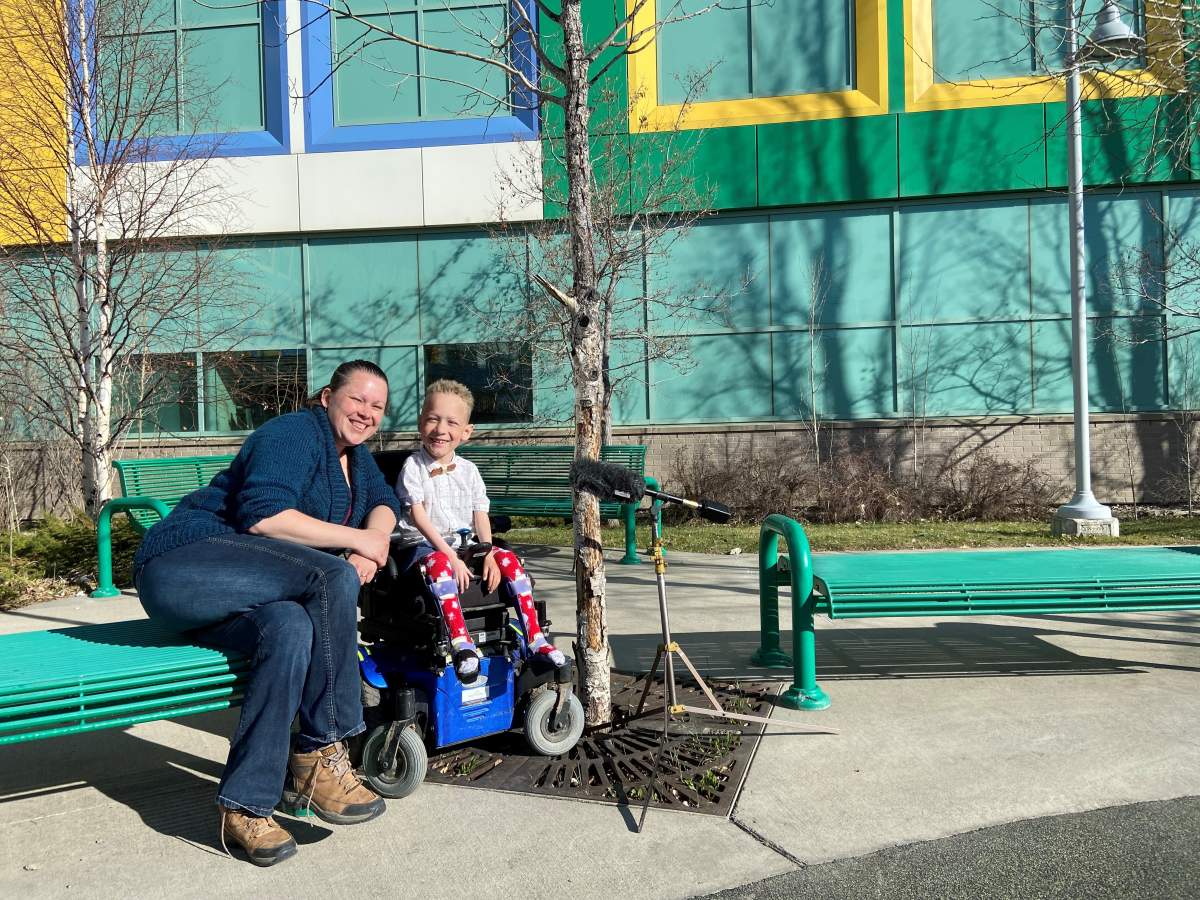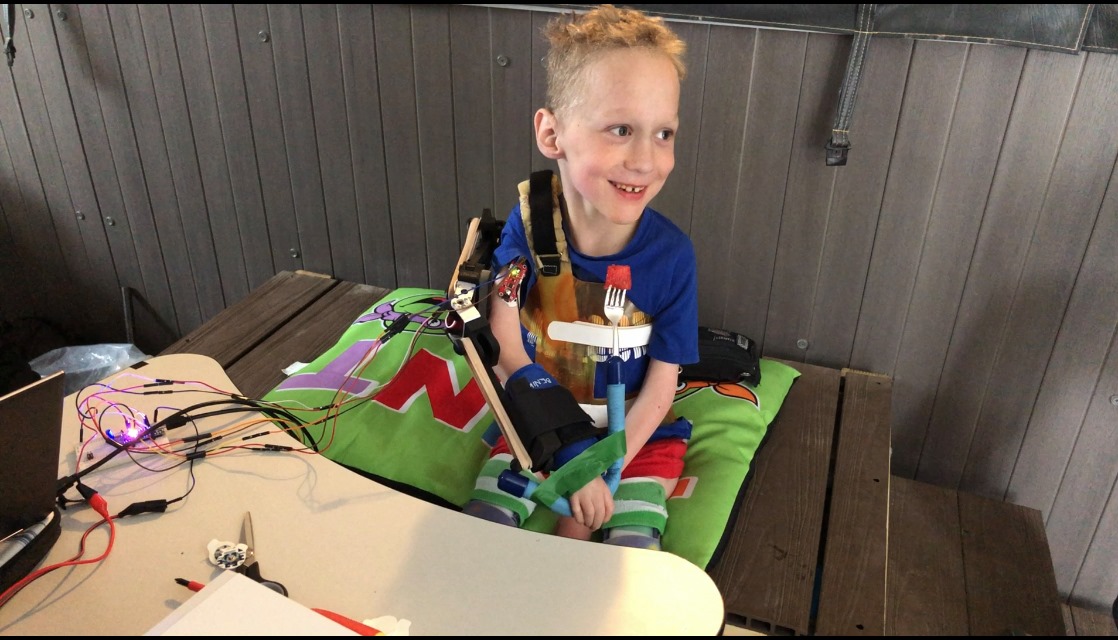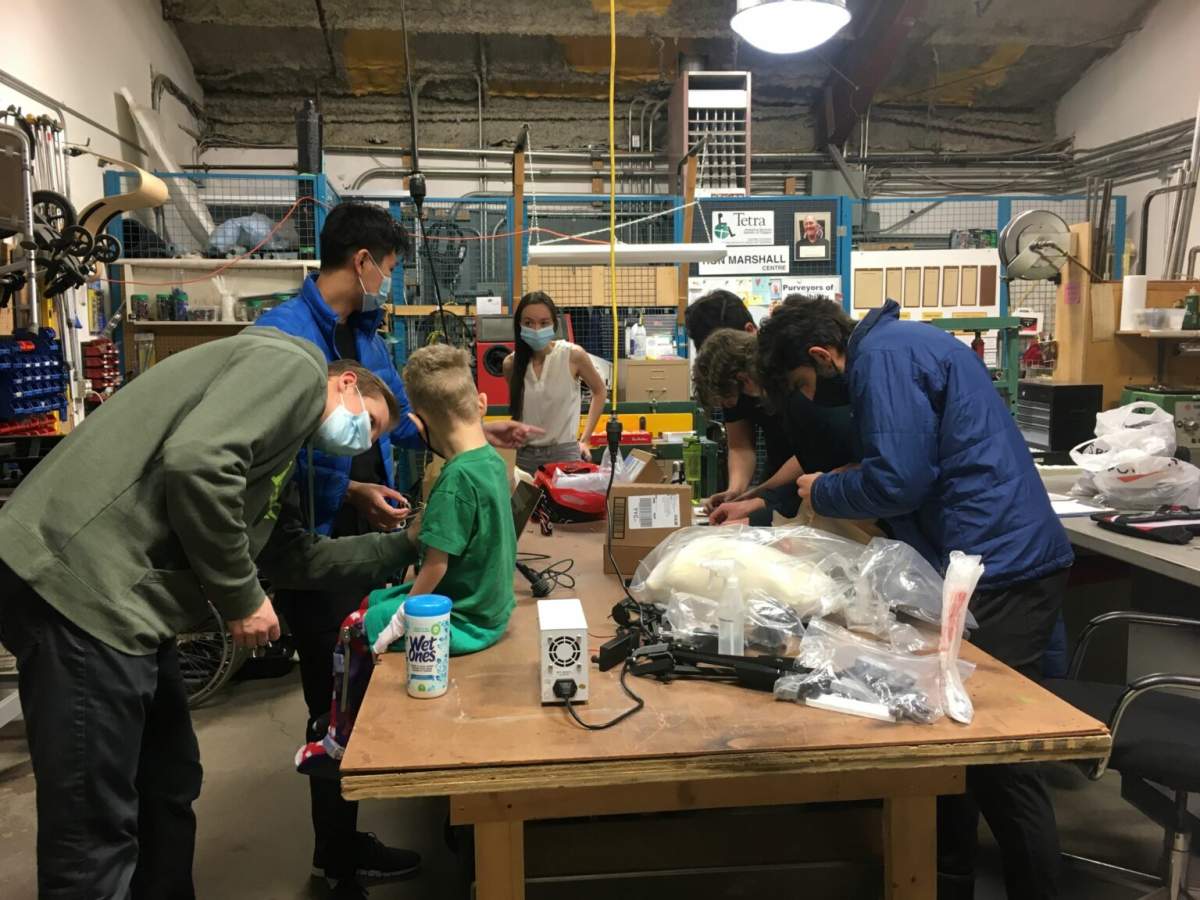Albertan Reid Hintz, 7, was born with a condition called arthrogryposis multiplex congenita.

His muscles are stiff, and he has a limited range of motion, making routine tasks a challenge.
“I can’t eat by myself, and when I play, I got to lay down, and my legs don’t work that good,” Reid said.
His mom, Rebecca Hintz, said he was diagnosed as a severe case because all four of his limbs are affected.
“When he was born, he was sitting crossed-legged and his hands were wrapped around his forearm,” Rebecca said.
But the determined little boy doesn’t get discouraged. Having had nine surgeries and spending over 20 weeks in a cast to help his mobility, there was more to be done.
“My motto is, ‘I got this!'” Reid said.
In March 2019, a team of University of Calgary students at the Schulich School of Engineering was determined to change this little boy’s life.
Nick Perewernycky said they were so taken by Reid and his family.

Get weekly health news
“He’s unreal. Having a child like that with so much adversity in his life to have such a good spirit,” Perewernycky said.
“We are the lucky ones to be working with him.”
The team’s final Capstone project for their engineering program focused on creating an assistive-living exoskeleton for Reid.

“We wanted to put our engineering skills to help another person,” Perewernycky said. “We have myoelectric sensors fixed onto his muscle, and when they read impulses on his muscle, he can perform the bending at the elbow.”
The device allowed Reid to eat with utensils for the very first time.
“It was an amazing experience seeing him smile and to be able to do it by himself. It wasn’t anything I can compare it to,” Perewernycky said.
“I ate watermelon all by myself!” Reid said.
“We’d never seen his arms lift higher than the width of his body,” Rebecca said. “I had never seen Reid stack blocks vertically because he always had to be on his side. It’s something that every parent takes for granted — those milestones we never had.
“We all sat in awe. Reid was a trooper.”
Austin Ladouceur is also on the engineering team.
“We were presented with an opportunity to provide something special for Reid, and seeing how much effort Rebecca puts into their family is really encouraging for us to put in the extra mile,” Ladouceur said.
“Our motivation no longer had to do with grades.”
Their hope is to make the device more portable for Reid to take home and eventually make it more accessible to other kids living with the same condition.






Comments